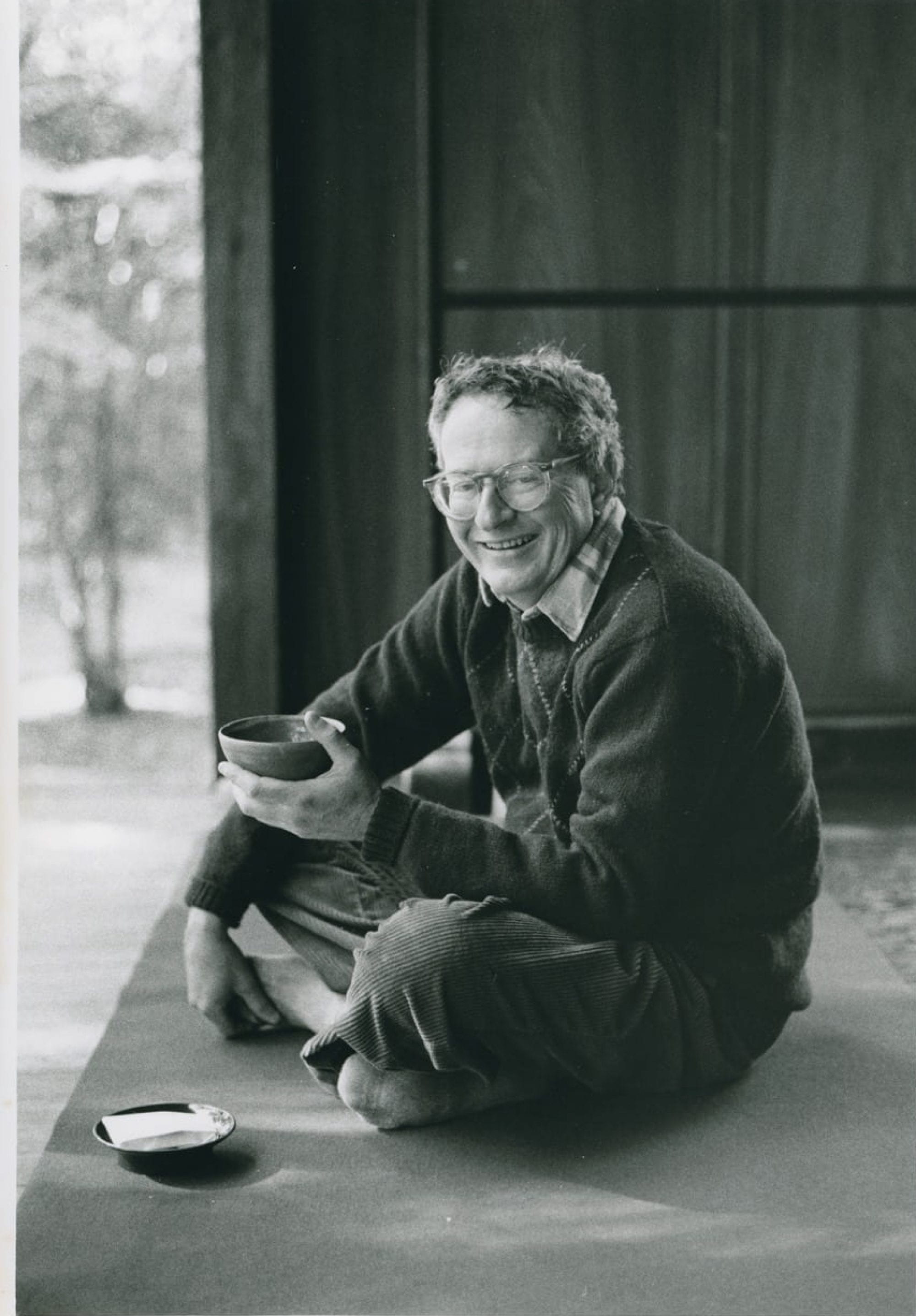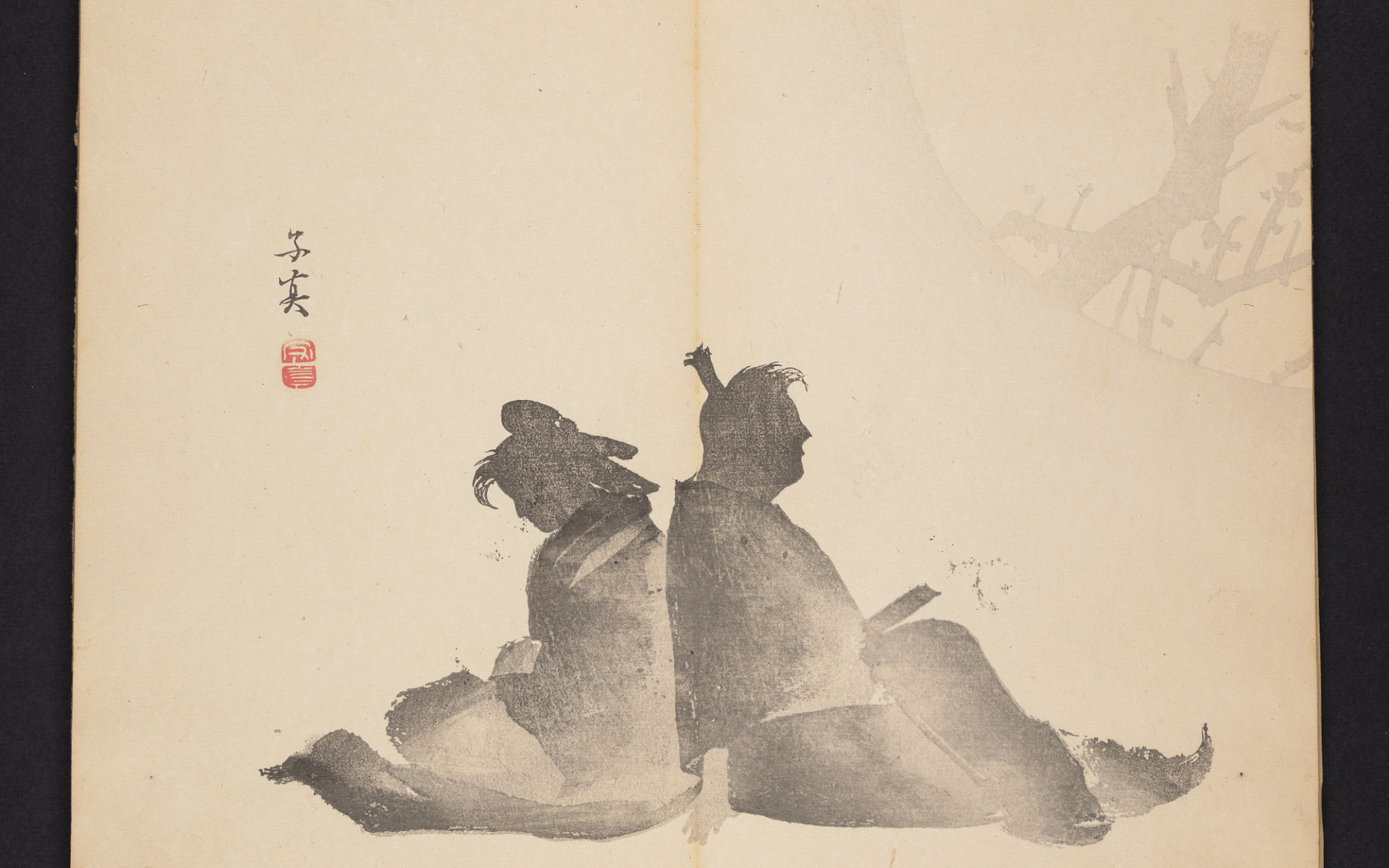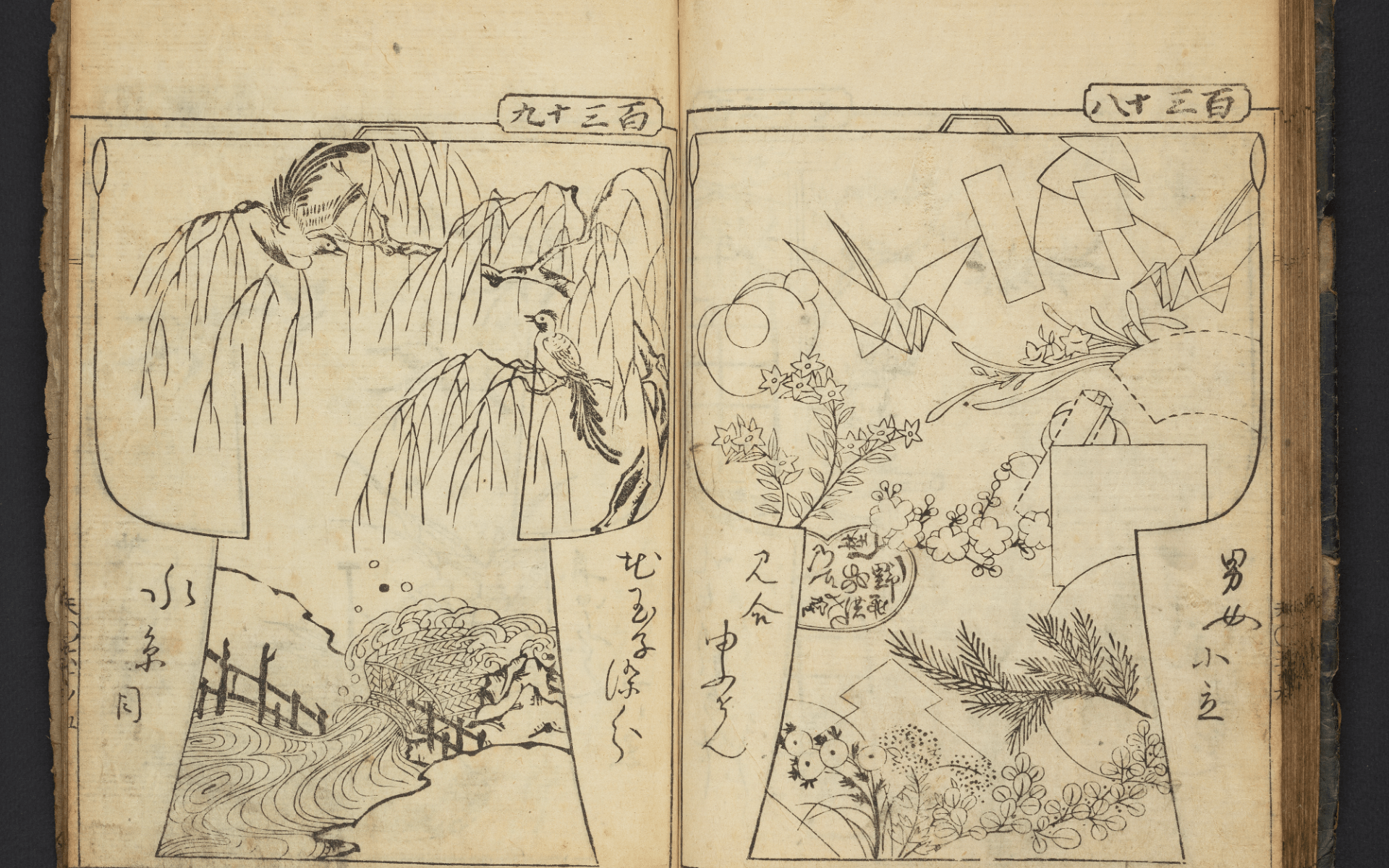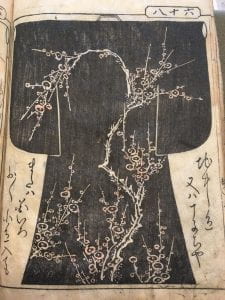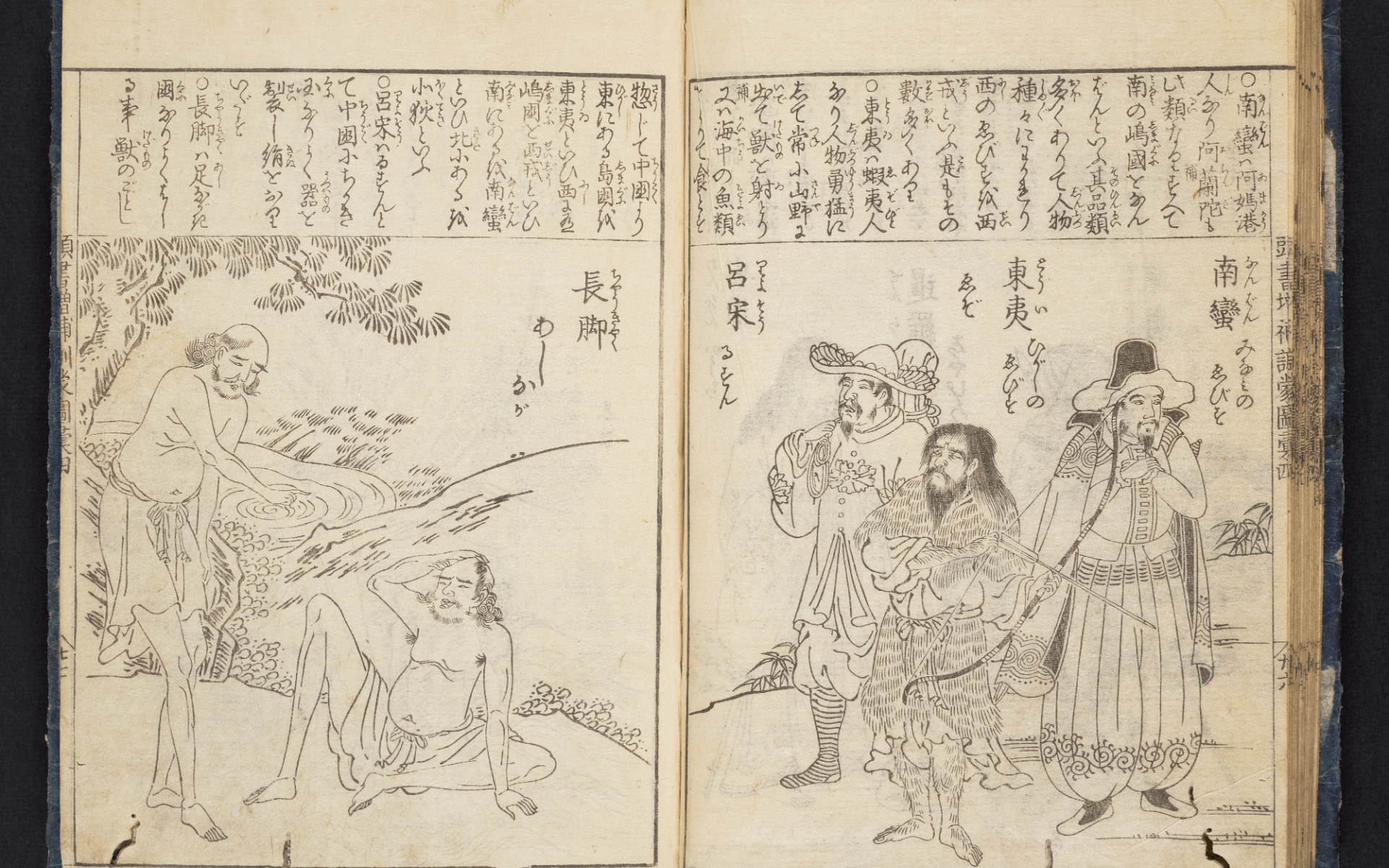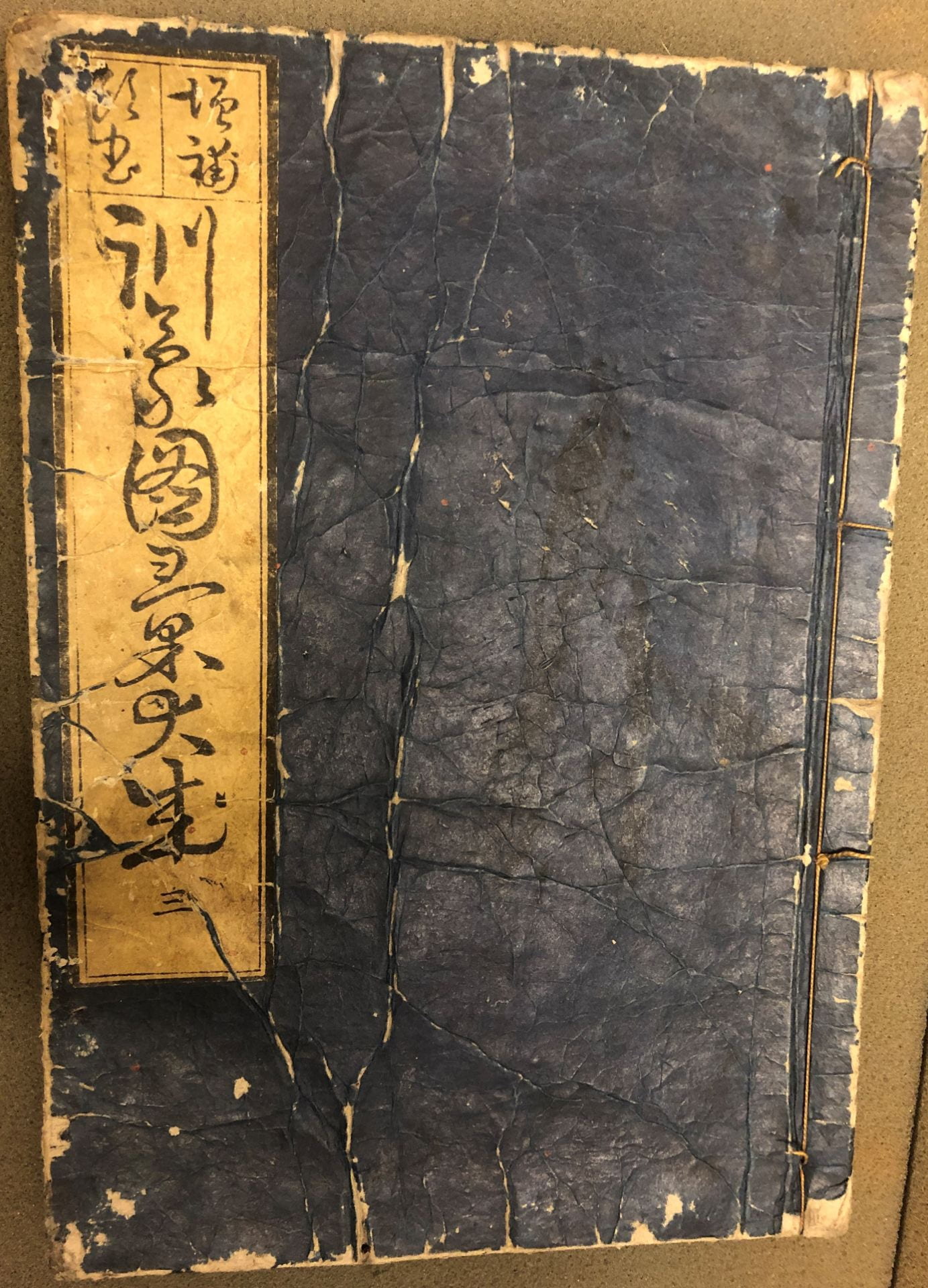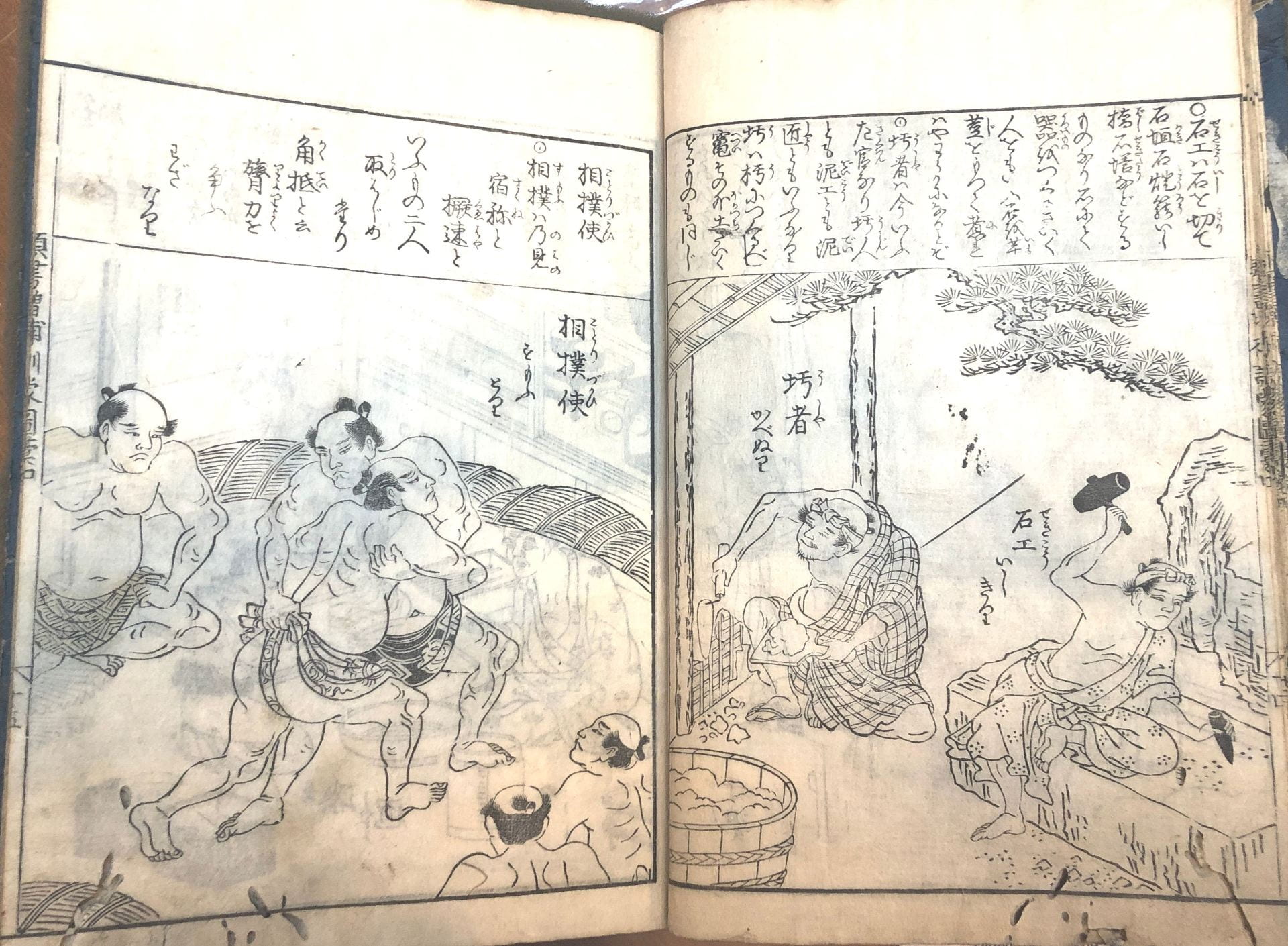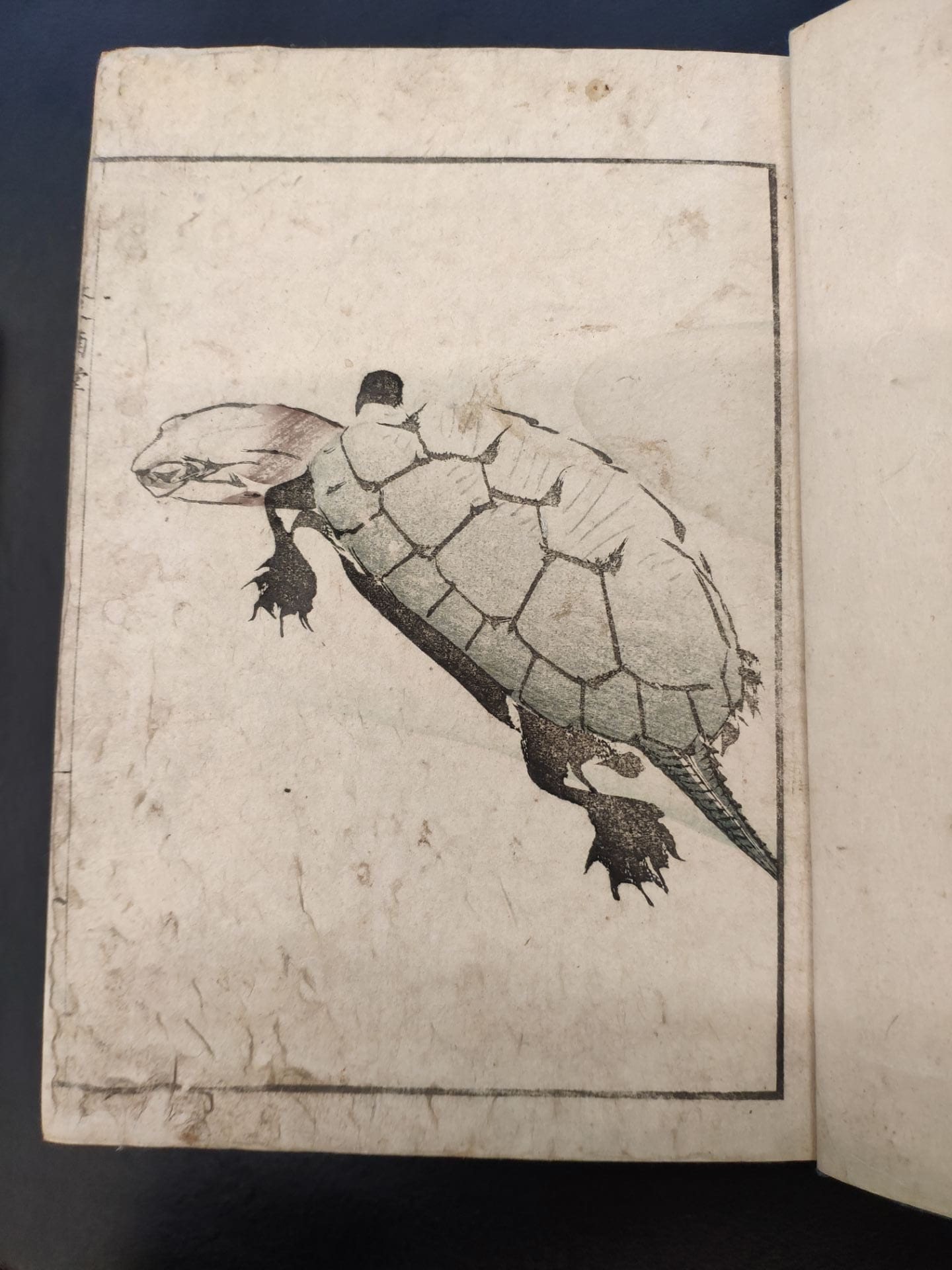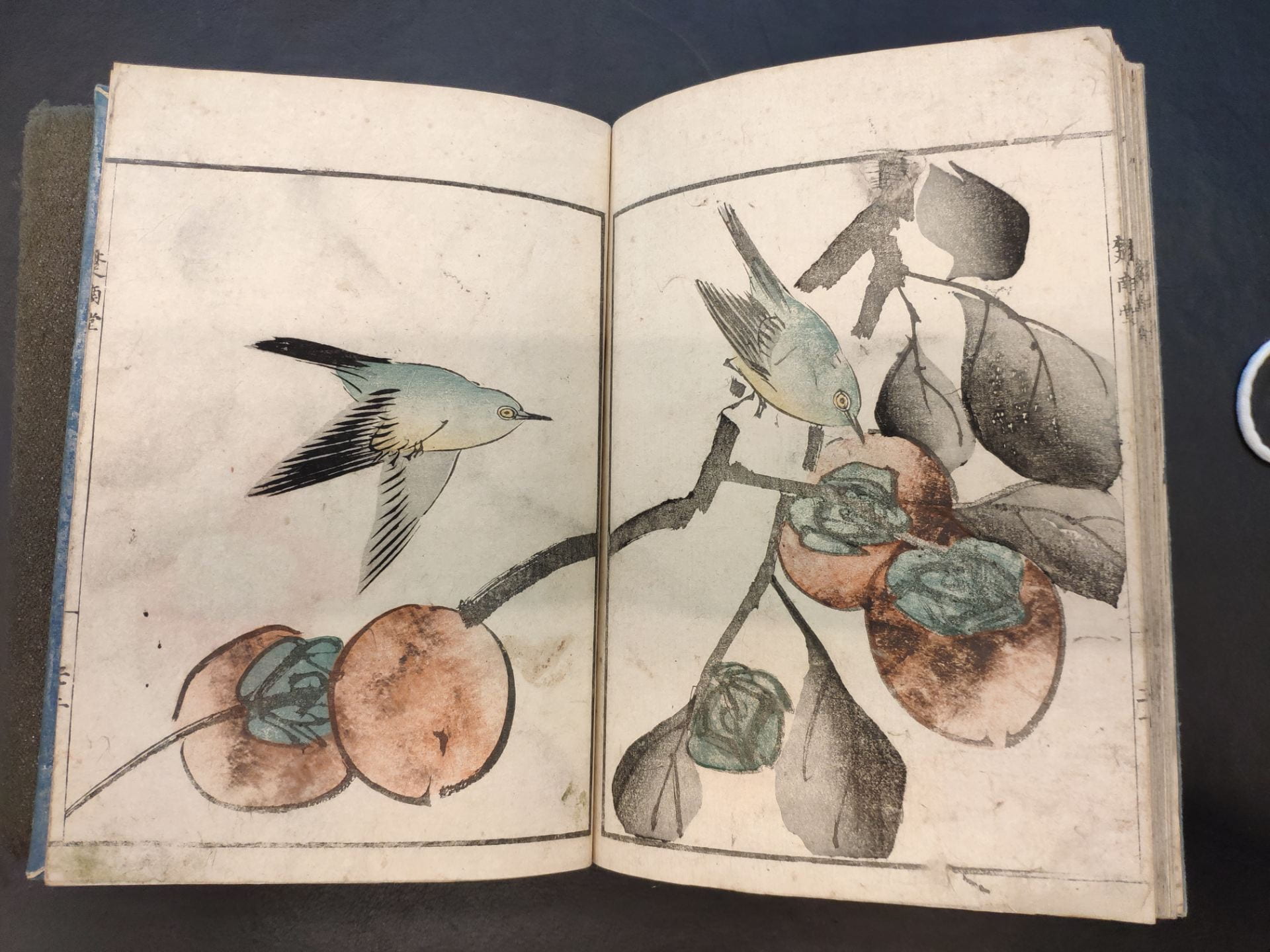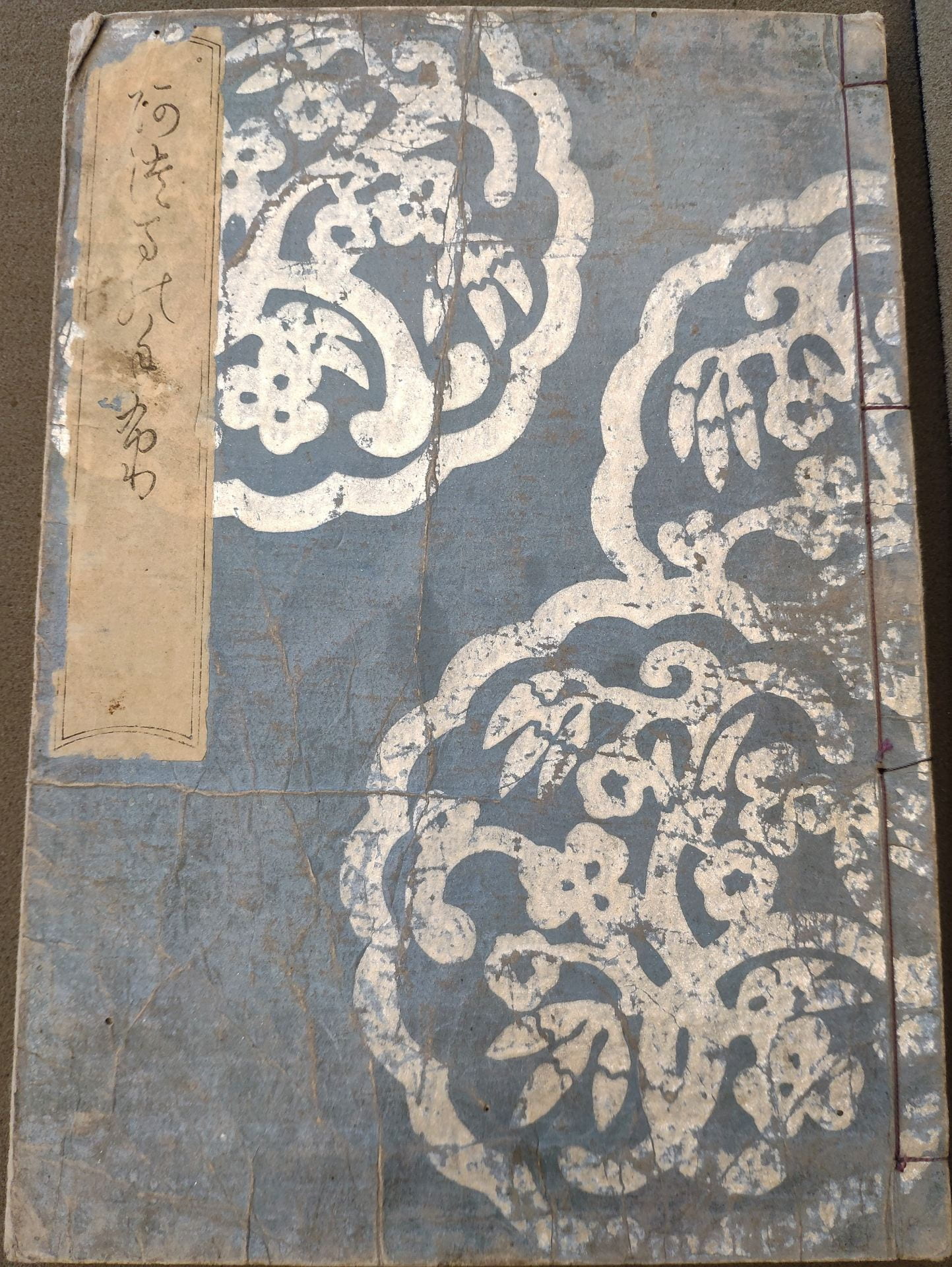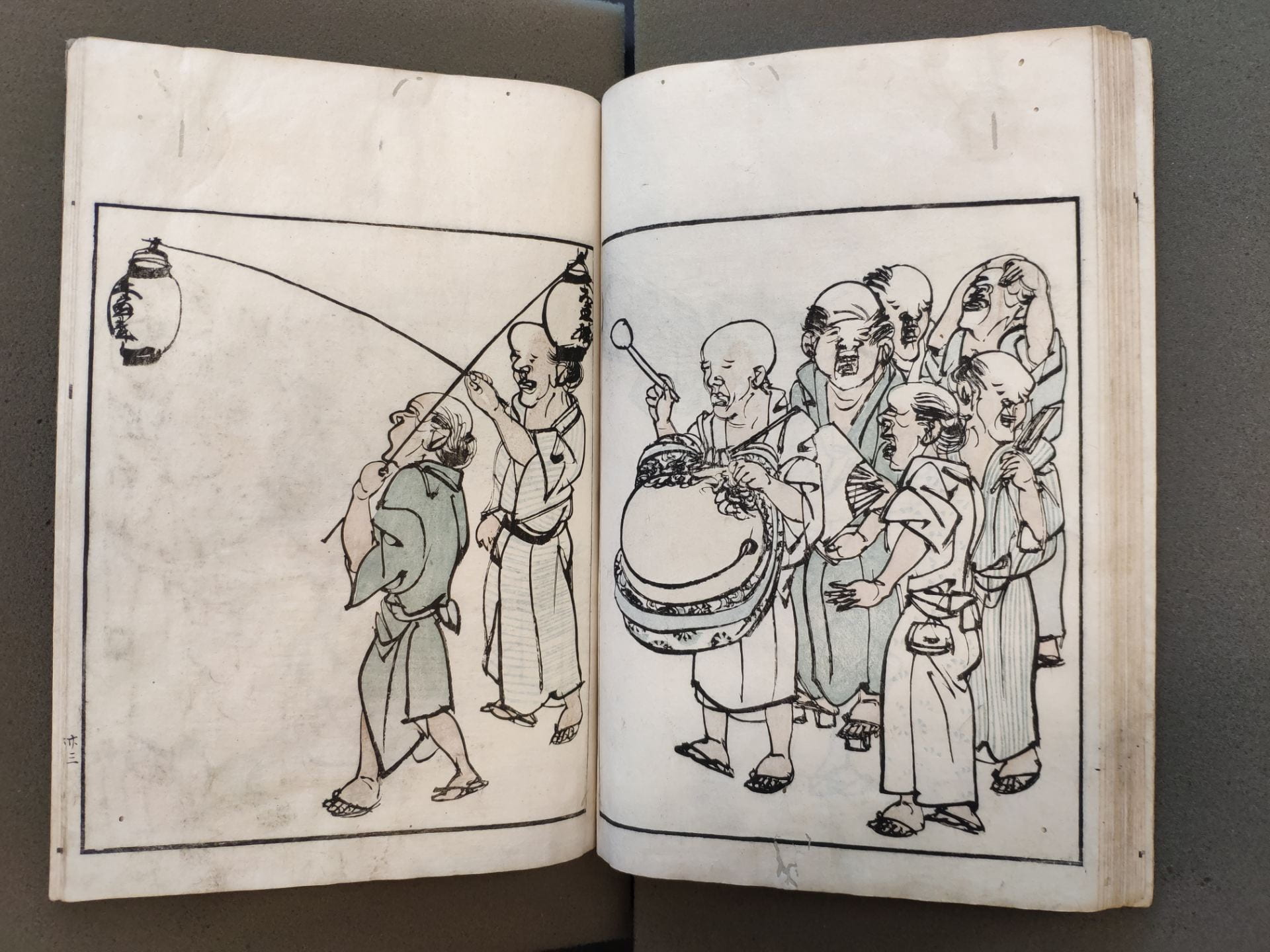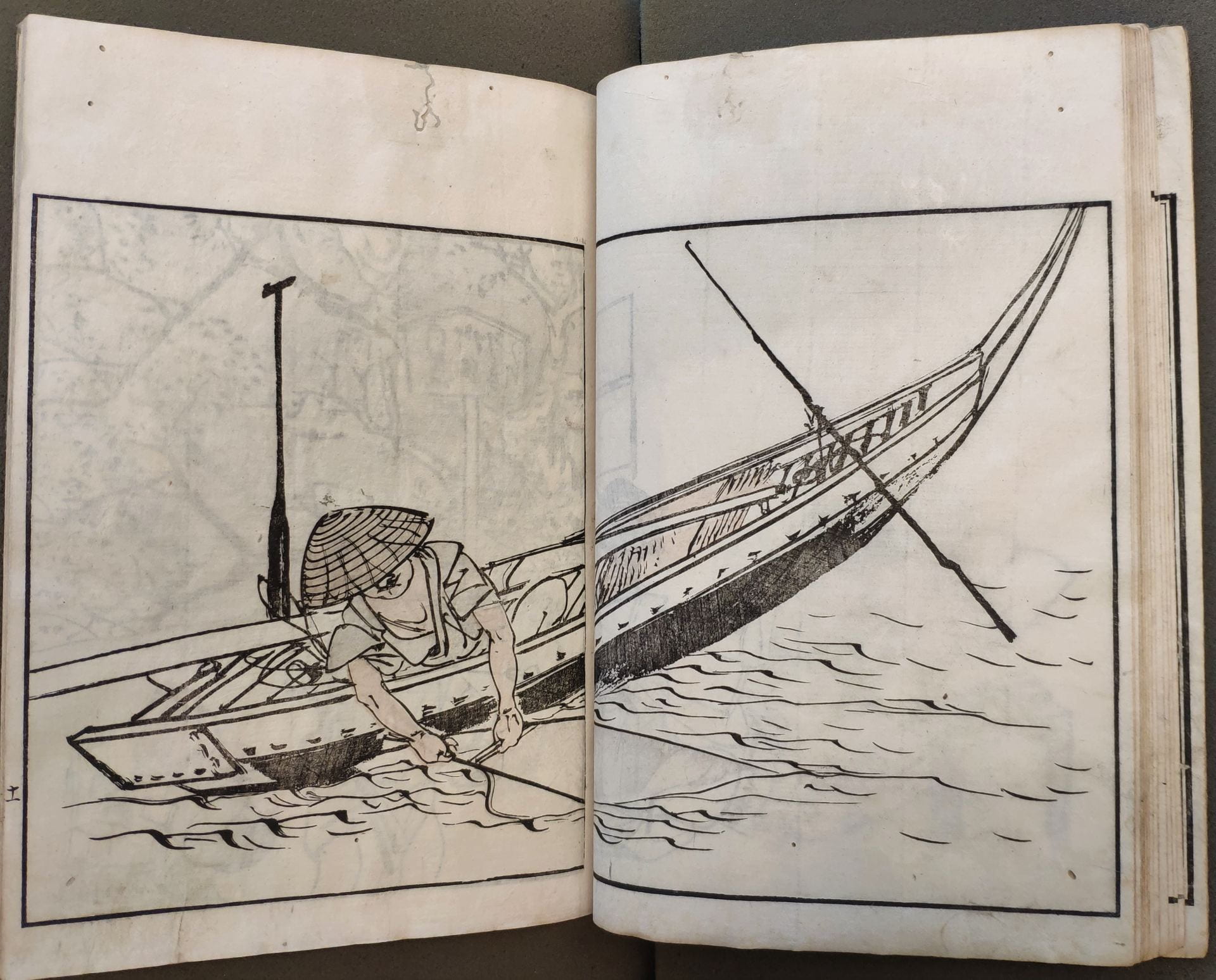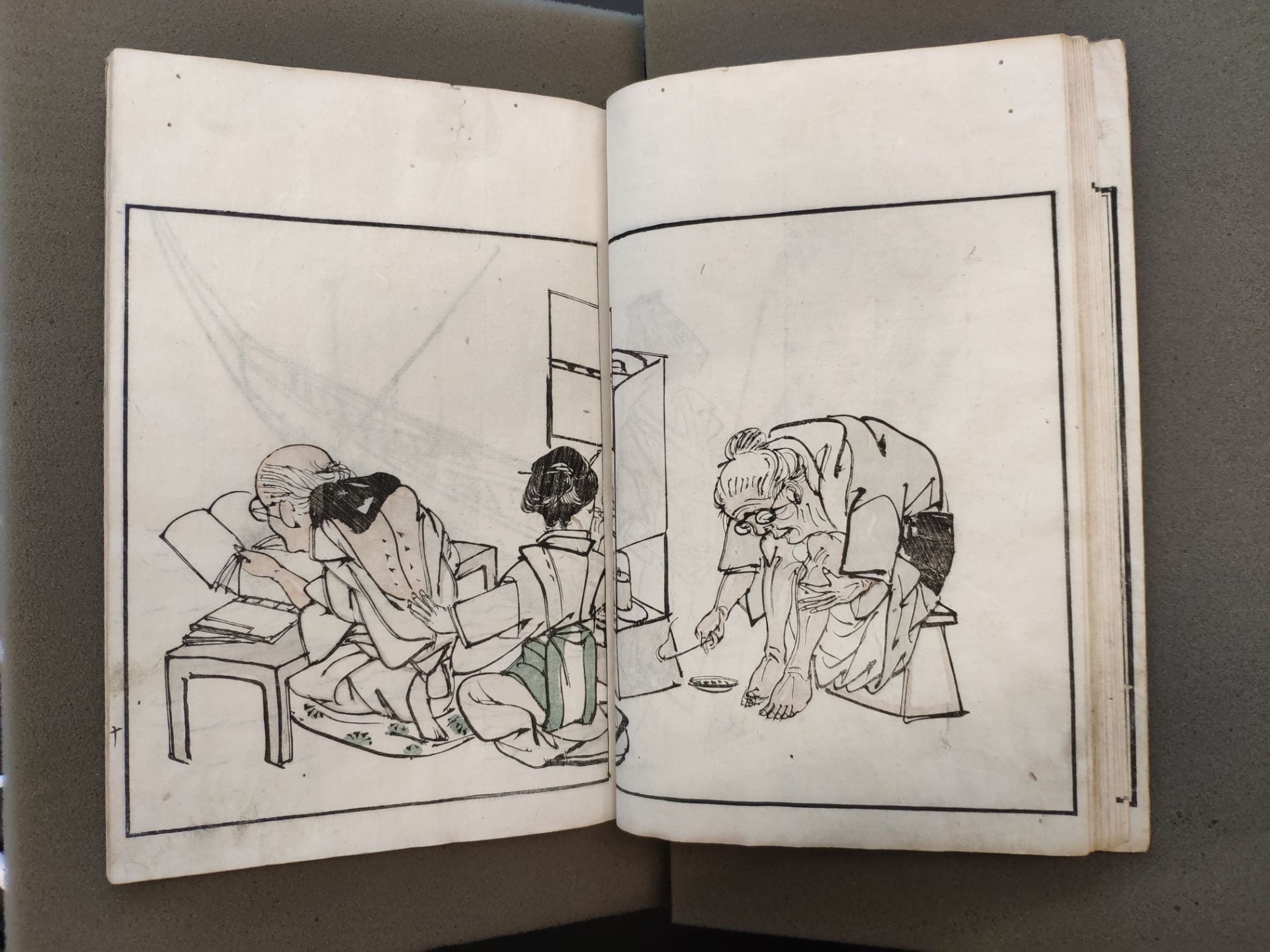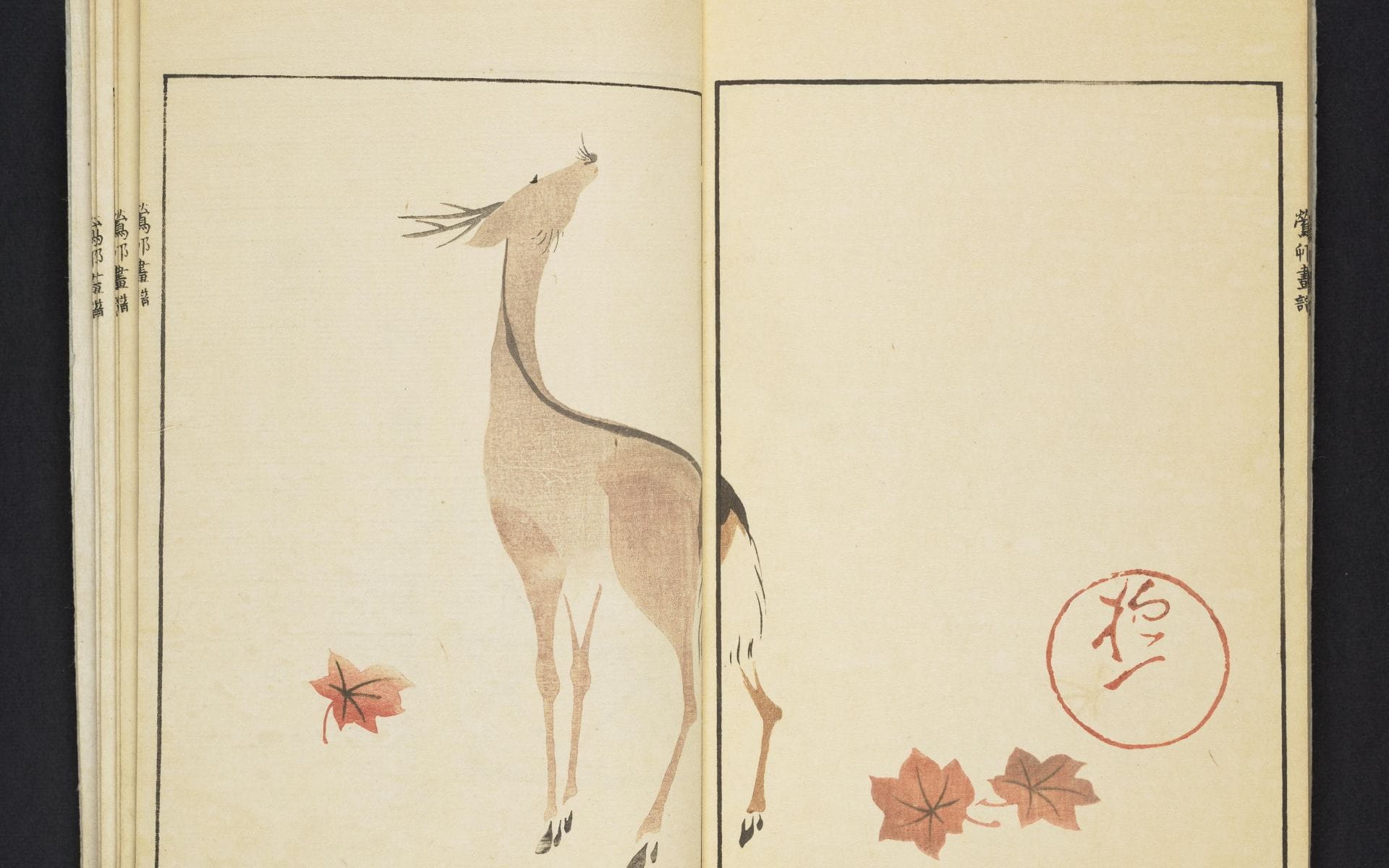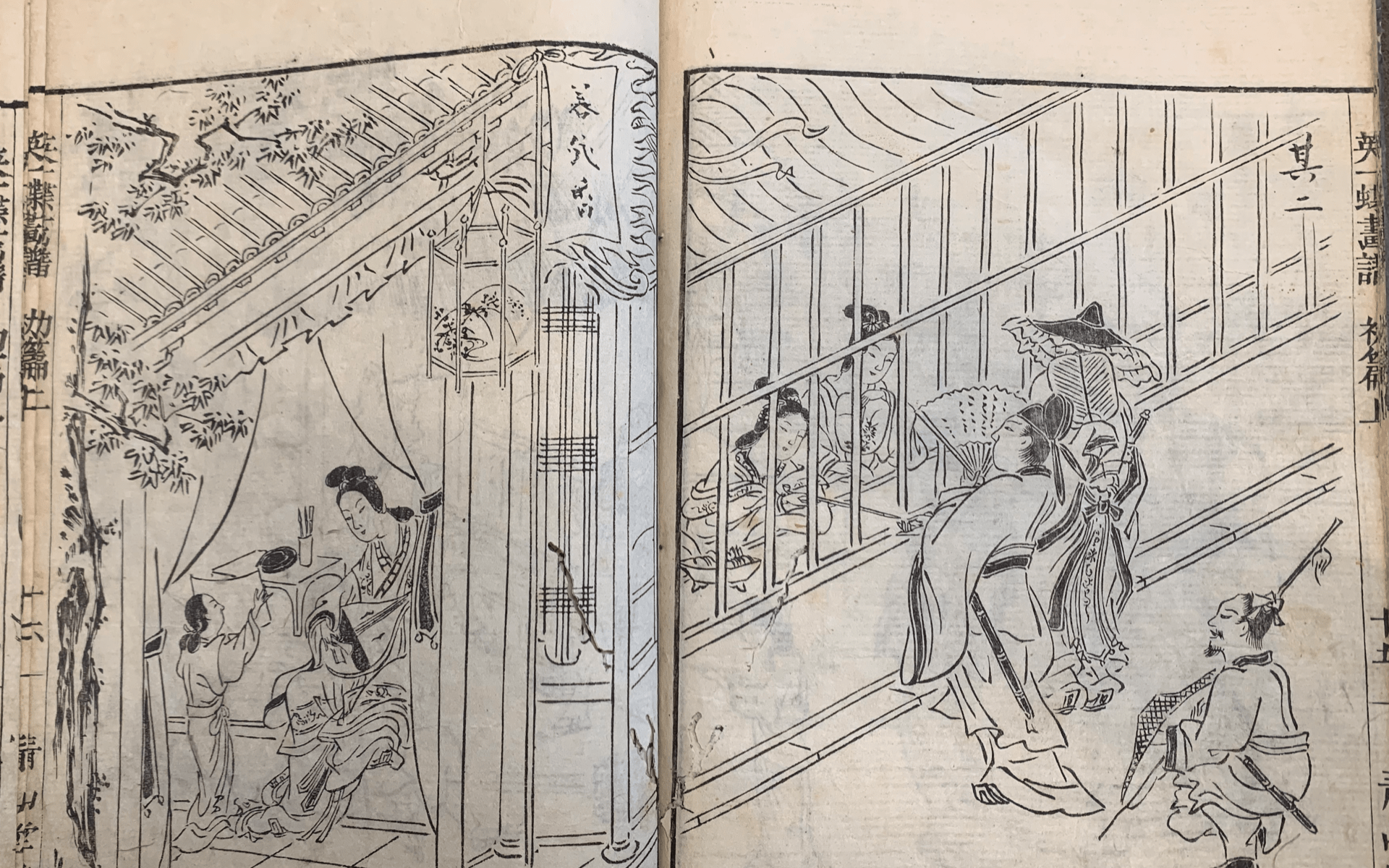
Artist: Ōtsuki Gentaku 大槻玄沢, Banzui, Shigetada.
Title: Kankai Ibun 環海異聞
Date: ca. 1807
Medium: Handwritten manuscript with hand-painted illustrations; Chinese ink and watercolor paint.
Location: Kislak Center for Special Collections – Arthur Tress Collection. Box 8, Item 9. See link.
See digital images here
Gift of Arthur Tress
Ōtsuki Gentaku’s Kankai Ibun (1807), also referred to as Strange Tales of a Circumnavigation, tells the adventurous story of sixteen Japanese sailors who were shipwrecked on the coast of Russia in 1793. The four surviving sailors stayed in Russia for more than ten years as tutors in the Japanese language and returned to Japan in 1804. Together with Shimura Kōkyō, Gentaku compiled the text for the illustrated travel account based on oral evidence, reporting on the experiences of the Japanese men in the Western world[1]. Originally the manuscript consists of 15 (or occasionally 16) volumes and was produced throughout nineteenth-century Japan[2].
The edition offered here includes 5 double-page and 2 single-page hand-colored illustrations. The same number of illustrations exist in volume 9 and 10 of similar copies[3]. Both volumes depict scenes of the sailors’ stay in St. Petersburg. The existence of stains and water damage that can only be found on one-half of the manuscript, suggests that our edition has been recomposed. Based on visual comparison of the individual illustrations with other existing copies, it can be observed that every illustration has its own individual characteristics in terms of color and specific details. It seems therefore unlikely that the maker has made any use of printing techniques[4].
The manuscript includes among others, illustrations of the launch of a hot air balloon and the sailor’s visit to the giant Globe of Gottorf in the Ethnographical Museum at the Academy of Sciences on Vasiliev Island[5]. In addition, two portraits of Catherine the Great and Tsar Alexander I are included[6]. The colorful illustrations give us a glimpse into the Japanese representations of the East-West encounters, during a persistent period of isolation. More specific, at the end of the Edo period the Japanese perceived the Russians as violent ‘red barbarians’ and enemies[7], which explains the Japanese interest in this particular kind of manuscript that allowed them to learn more about their rivals.
As an influential scholar in the field of both medical as well as Dutch studies (rangaku), the Japanese physician Ōtsuki Gentaku (1757-1827), also known as Banzui or Shigetada, is mainly rewarded for his role in the expansion of Western knowledge in Japan. He is not only recognized for his influential writings on Western science, but also as the founding father of academy in Dutch studies, the Shirandō Academy, opened in 1786[8].
Another impression of this manuscript is in the SOAS Library in London. Other volumes of Gentaku’s Kankai Ibun originating from the beginning until the end of the nineteenth-century can be found in the USC Libraries East Asian Library (Los Angeles), the Alaska State Library & Historical Collections (Juneau), The Melikian Collection in the ASU library (Tempe, Arizona), the Doshisha University (Kyoto) and the Kyoto University Library.
Selected Readings
- Ikuta Michiko, ‘Changing Japanese–Russian Images in the Edo Period’ in Japan and Russia: Three Centuries of Mutual Images, Yulia Mikhailova and M. William Steele (eds.) (Folkestone: Global Oriental, 2008), pp. 11–31.
- Margarita Winkel, Discovering different dimensions. Explorations of culture and history in early modern Japan (Leiden: Leiden University, 2004).
- Martin Ramming. “A description of the Gottorp globe in a Japanese manuscript book.” Imago Mundi, Vol. 9 (1952), pp. 103-105.
- Terrence Jackson, ‘Ōtsuki Gentaku: Network Facilitator’ in Network of Knowledge: Western Science and the Tokugawa Information Revolution (University of Hawai’i Press, 2016), pp. 24-40.
- Tsuneharu Gonnami. Images of Foreigners in Edo Period Maps and Prints. Diss. University of British Columbia, 1998.
Posted by Hilda Groen
October 28, 2019
[1] Launch of a hot-air balloon in St Petersburg and portraits of the Tsar and Tsarina of Russia, Alexander I and Elizabeth in SOAS Library, London. http://digital.soas.ac.uk/LOAA005806/00001, accessed on 23 October, 2019.
[2] Japanese castaway manuscripts volume, Kankai Ibun, Exotic Tales Around the Oceans Stock ID #157024, Asia Bookroom. https://www.asiabookroom.com/pages/books/157024/japanese-castaway-manuscript-volume/kankai-ibun-exotic-tales-around-the-oceans, accessed on 23 October, 2019.
[3] The same 5 double-page and 2 single-page hand-colored illustrations appear in volume 9 and 10 out of the 15 volumes in total of the kankai ibun (1807) that is now in the Alaska State Library (see https://vilda.alaska.edu/digital/collection/cdmg21/id/15404/) and the Rare Books Collection of Doshisha University (see https://doors.doshisha.ac.jp/duar/repository/ir/22419/?lang=1 and https://doors.doshisha.ac.jp/duar/repository/ir/22420/?lang=1).
[4] When you compare the different examples that can be found of the illustrations of Catherine the Great and Tsar Alexander I, it can be observed that every portrait has its own distinctive facial features and use of color. See for instance Kankai Ibun (1850) Christie’s Lot 123, 8 – 19 December 2014; Kankai Ibun (1807), Vol.10, Alaska State Library; Kankai Ibun (1807), Vol.10, Rare Books Collection of Doshisha University.
[5] Martin Ramming, ‘A description of the Gottorp globe in a Japanese manuscript book’, Imago Mundi, Vol. 9 (1952), pp. 103-105.
[6] Otsuki Gentaku (text by), Edo period (circa 1850), Lot 123, SALE 5932, Christie’s 8 – 19 December 2014, https://onlineonly.christies.com/s/japanese-art-english-court/otsuki-gentaku-text-by-edo-period-circa-1850-123/13754, accessed on 23 October, 2019.
[7] Ikuta Michiko, ‘Changing Japanese–Russian Images in the Edo Period’ in Japan and Russia: Three Centuries of Mutual Images, Yulia Mikhailova and M. William Steele (eds.) (Folkestone: Global Oriental, 2008), p. 25.
[8] Terrence Jackson, ‘Ōtsuki Gentaku: Network Facilitator’ in Network of Knowledge: Western Science and the Tokugawa Information Revolution (University of Hawai’i Press, 2016), pp. 24-40.
